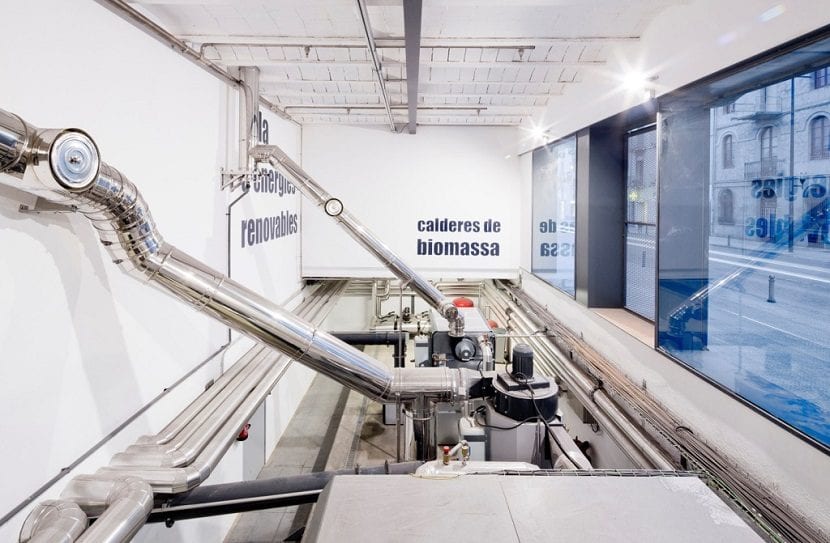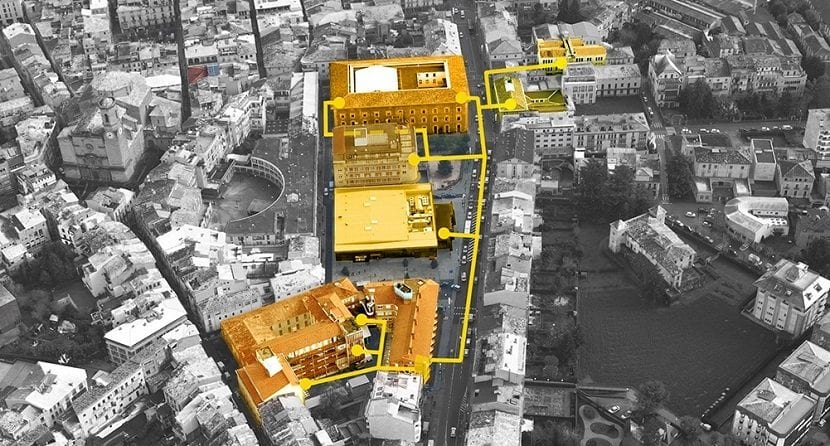
In the absence of official confirmation and presentation in the media, everything seems to indicate that the city of Guadalajara will have a heat network with biomass that will supply thermal energy to 6.000 residents. This has been advanced by the City Council and the company in charge of the project, Biomass Resources (Rebi), to various media. This company would thus add one more network to the three that he already manages between Soria (one in the capital and another in Ólvega) and Valladolid.
At the beginning of the year, the mayor of Guadalajara himself, Antonio Román, gave the first indications about the new facility at the presentation of the Local Strategy to Mitigate Climate Change. "Residential buildings have a significant weight in the emissions associated with energy consumption (398.854.478 kWh / year)"It was stated in the subsequent press release, adding that" the City Council is studying the feasibility of applying in Guadalajara a project to create district heating by biomass that would affect some 6.000 residents. "
Hours later, Guadalajara Diario provided more data: twenty kilometers of network and the plant would be located in the Balconcillo industrial estate. It will have a production capacity of 80.000 MWh / year and will consume about 30.000 tonnes of chips and pellets from Rebi partner factories.
Rebi's Fourth Network
This installation has been confirmed by Rebi, although without expanding any more pending the official presentation. The number of people supplied would make it in one of the largest residential biomass heat networks in Spain, since only that of Móstoles (Madrid), which has not yet reached its maximum degree of development (it hopes to reach 7.500 residents), would exceed it.

Rebi currently manages three other large urban networks: Soria capital, Ólvega (Soria) and the University of Valladolid. With regard to the first, and as published by the company itself last January, "an emissions study reveals nitrogen oxide values seventy percent lower than those allowed by Europe”. It refers to directive 2015/2193 on the limitation of emissions to the atmosphere from combustion installations between one and fifty megawatts.
Olot (Girona) creates the first air conditioning network based on three renewable energies

The Olot City Council, capital of the Garrotxa region in Catalonia, has just launched the first renewable trigeneration air conditioning network. It has been inaugurated by the president of the Generalitat Carles Puigdemont. The system, which supplies heat, cold and electricity in the center of Olot and has an automated intelligent control system, it has been executed by a Temporary Union of Companies of Gas Natural Fenosa and Wattia.
The project makes this city of La Garrotxa the first in Spain with a trigeneration system for renewable energies: the system combines technology from geothermal, photovoltaic and biomass. According to the company, «two factors make Olot the ideal location to develop this pioneering project: first, it is an area technologically involved in energy sustainability and, second, the municipality has a dense forest mass ».
The network serves a total of 7 equipments: the old Sant Jaume Hospital (the Sant Jaume residence and the commercial premises), the La Garrotxa Regional Museum, the Caritat, the Municipal Market, the Montsacopa residence, the Casal de la Gent Gran of the municipality and Can Monsà. The hot and cold air conditioning network has an approximate length of 1.800 meters that allow air conditioning of the 40.000 square meters of surface of the buildings to which they are connected.

The new hot and cold infrastructure will save every year to the citizens of Olot the equivalent of 750 tons of carbon dioxide emissions, an amount that 290 hectares of forest should absorb, and will also reduce the energy bill.
«Taking advantage of the works of the new Olot Market, they built 24 geothermal wells in the basement of the square, and work began on the design of the installation of the photovoltaic solar panels and the Energy Room, located in the old facilities of the Olot Hospital ». In this room -continues the Consistory-, two boilers have been installed biomass of 450 and 150 kilowatts of powerrespectively three geothermal pumps of sixty kilowatts each, two accumulators of hot water of 8.000 liters each, "as well as the system of impulsion and control of the network that supplies energy to a total of 7 equipments". The City Council estimated a saving of around 10% compared to the cost of current non-renewable energy sources.